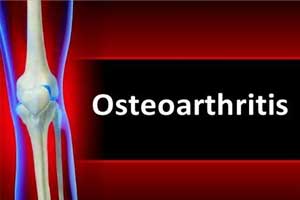- Home
- Editorial
- News
- Practice Guidelines
- Anesthesiology Guidelines
- Cancer Guidelines
- Cardiac Sciences Guidelines
- Critical Care Guidelines
- Dentistry Guidelines
- Dermatology Guidelines
- Diabetes and Endo Guidelines
- Diagnostics Guidelines
- ENT Guidelines
- Featured Practice Guidelines
- Gastroenterology Guidelines
- Geriatrics Guidelines
- Medicine Guidelines
- Nephrology Guidelines
- Neurosciences Guidelines
- Obs and Gynae Guidelines
- Ophthalmology Guidelines
- Orthopaedics Guidelines
- Paediatrics Guidelines
- Psychiatry Guidelines
- Pulmonology Guidelines
- Radiology Guidelines
- Surgery Guidelines
- Urology Guidelines
New osteoarthritis treatment prevents cartilage damage-Technological breakthrough

MIT, U.S.A: In a major technological breakthrough engineer at MIT have designed a new material that can administer drugs directly to the cartilage to prevent chondrolysis in osteoarthritis(OA) patients. The study appeared in the journal Translational Medicine.
Osteoarthritis is the most common cause of disability across the globe and this painful condition develops when there is a breakdown of cartilage in the joints. Currently, NSAIDs may alleviate pain but no therapy is able to prevent the breakdown of cartilage.
The material designed by the MIT researchers can penetrate deep into the cartilage, delivering drugs that could potentially heal damaged tissue.
In a similar study published in the journal Annals of the Rheumatic Diseases, Medical Dialogues has earlier reported that LNA-miR-181a-5p ASO exhibit cartilage-protective effects in Facial Joint(FJ) and knee osteoarthritis(OA).
Read Also: Novel treatment may stop progression of osteoarthritis
During the experiment on mice, the researchers showed that delivering an experimental drug called insulin-like growth factor 1 (IGF-1) with this new material prevented cartilage breakdown much more effectively than injecting the drug into the joint on its own.
"This is a way to get directly to the cells that are experiencing the damage, and introduce different kinds of therapeutics that might change their behavior," says Paula Hammond, head of MIT's Department of Chemical Engineering and the senior author of the study.
Previous studies have shown that IGF-1 can help regenerate cartilage in animals. However, many osteoarthritis drugs that showed promise in animal studies have not performed well in clinical trials.
The researchers at MIT thought that was because the drugs were cleared from the joint before they could reach the deep layer of chondrocytes that they were intended to target. To overcome that, they set out to design a material that could penetrate all the way through the cartilage.
The sphere-shaped molecule they came up with contains many branched structures called dendrimers that branch from a central core. The molecule has a positive charge at the tip of each of its branches, which helps it bind to the negatively charged cartilage. Some of those charges can be replaced with a short flexible, water-loving polymer, known as PEG, that can swing around on the surface and partially cover the positive charge. Molecules of IGF-1 are also attached to the surface.
When these particles are injected into a joint, they coat the surface of the cartilage and then begin diffusing through it. This is easier for them to do than it is for free IGF-1 because the spheres' positive charges allow them to bind to cartilage and prevent them from being washed away. The charged molecules do not adhere permanently. The flexible PEG chains on the surface that cover and uncover charge as they move, the molecules can briefly detach from cartilage, enabling them to move deeper into the tissue.
Read Also: Cucumber extract effective in reducing pain in Osteoarthritis
Once the particles reach the chondrocytes, the IGF-1 molecules bind to receptors on the cell surfaces and stimulate the cells to start producing proteoglycans, the building blocks of cartilage and other connective tissues. The IGF-1 also promotes cell growth and prevents cell death.
Cartilage in rat joints is about 100 microns thick, but the researchers also showed that their particles could penetrate chunks of cartilage up to 1 millimeter -- the thickness of cartilage in a human joint.
The researchers began developing this material as a way to treat osteoarthritis that arises after a traumatic injury, but they believe it could also be adapted to treat age-related osteoarthritis. They now plan to explore the possibility of delivering different types of drugs, such as other growth factors, drugs that block inflammatory cytokines, and nucleic acids such as DNA and RNA.
These results suggest that PEGylated PAMAM dendrimer nanocarriers could improve the pharmacokinetics and efficacy of disease-modifying osteoarthritis drugs in the clinic.
For full information log on to 10.1126/scitranslmed.aat8800

Disclaimer: This site is primarily intended for healthcare professionals. Any content/information on this website does not replace the advice of medical and/or health professionals and should not be construed as medical/diagnostic advice/endorsement or prescription. Use of this site is subject to our terms of use, privacy policy, advertisement policy. © 2020 Minerva Medical Treatment Pvt Ltd